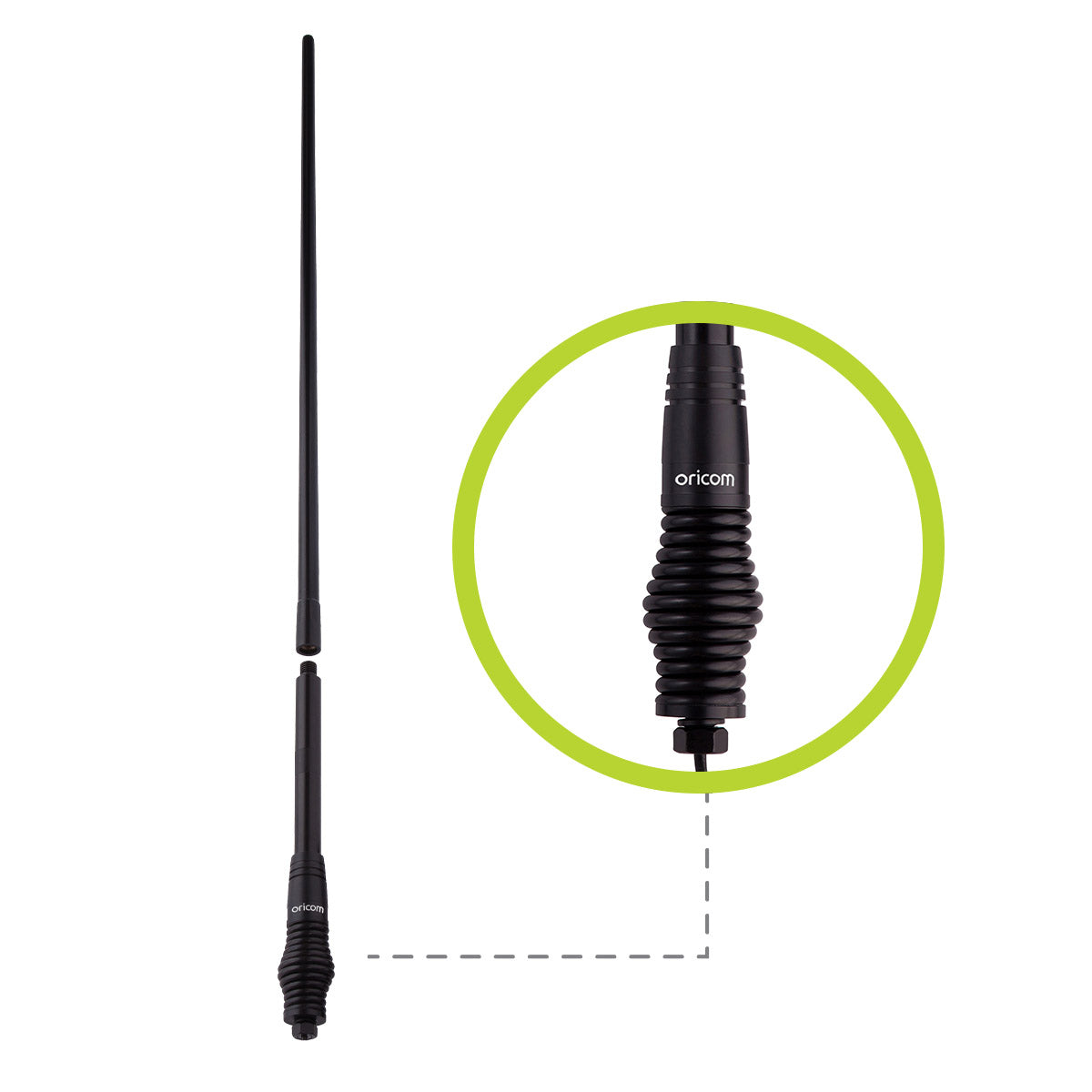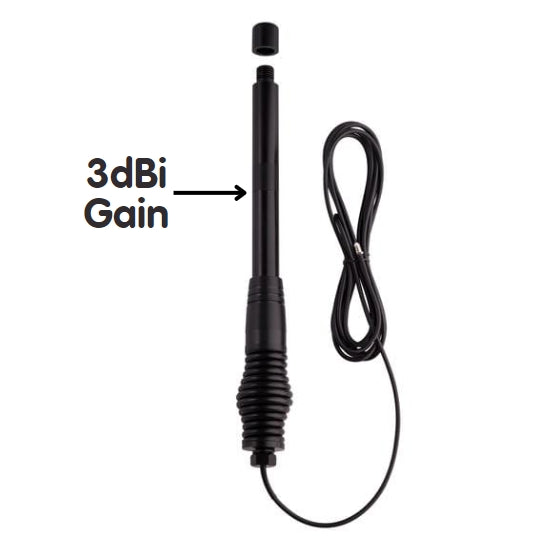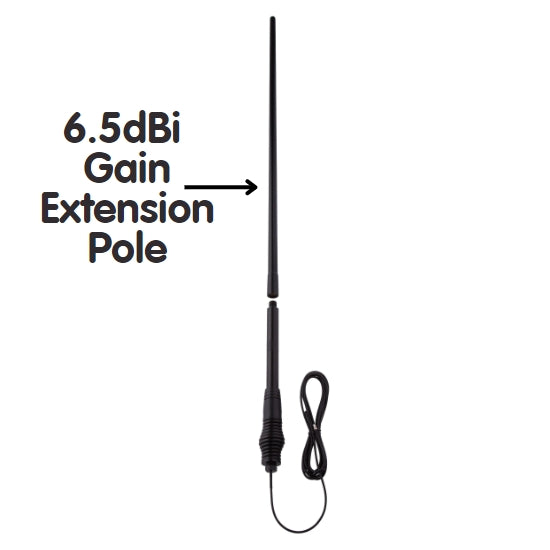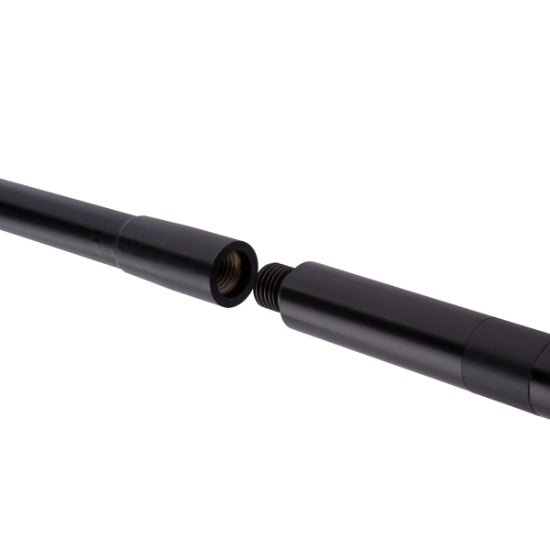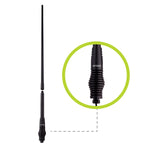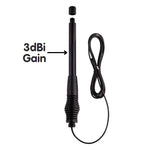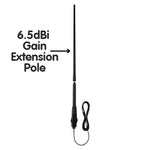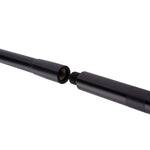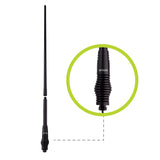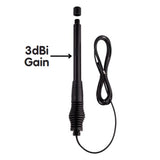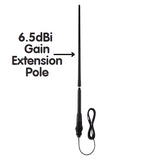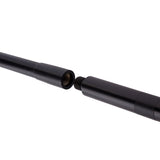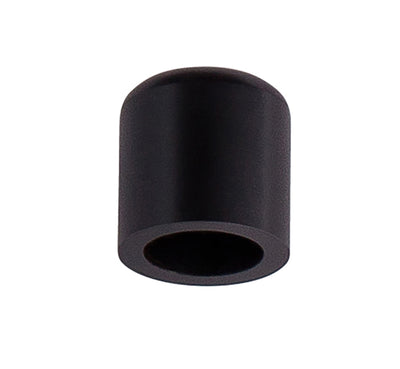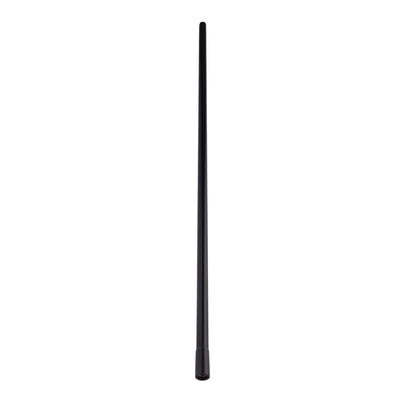100% Aussie Owned
Free Delivery Over $99
Trusted Local Support
Product Details
Key Features:
- UHF CB Antenna (3dBi), with 0.43m* fiberglass pole and heavy duty spring base
- 1m Fiberglass extension pole to convert antenna to a 1.4m 6.5dBi high gain antenna
- Coaxial cable (4.5m)
- Includes grub screw, PL259 adaptor and hex key to secure the fiberglass pole
- *Length of antenna includes spring base
Files
User guides
Accessories/Spare parts
Product registration
Additional Information
- Frequently Asked Questions
- Videos Guides
What factors should I take into account when purchasing an antenna?
When choosing an antenna, it is important to consider the terrain in which the antenna is to be used and match the best radiating pattern for the environment. – A 3dBi antenna has a wide pattern, ideal for undulating terrain. – 6-6.5dBi antennas are popular due to their performance over distance on flatter or slightly uneven terrain.
What is the range of a UHF CB Radio?
The range of a UHF CB radio is usually determined as the combined line of sight of both stations. UHF radio signals travel in straight lines between the radios and anything in between will attenuate the signals and in some cases, stop them altogether.
How does the environment affect the range of my UHF CB radio and antenna?
The range of your UHF CB radio is more of a question of what is between the stations. The attenuation of the signal in free air is very low, as moisture is added the attenuation becomes greater (anyone with satellite TV would have seen rain fade). Trees and other types of vegetation also contain water so a signal through a plantation or forest of trees will also be attenuated to some degree if not completely lost.
What role does elevation play in the range of a UHF CB Radio?
There is an easy answer to the range question and that is “elevation is your friend”. Elevation improves the line of sight to the horizon it is also good if you are on the road and trying to communicate with another station a few vehicles in front of you, it may not be possible to talk between two handhelds but once you put an antenna outside and higher than the roof of the car communications might be possible, just a little elevation can make a big difference. The advertised gain of an antenna is not the antenna amplifying the signal but just collecting or sending the signal in a specific direction, just like focusing a torch light the bulb produces the same amount of light, but the lens focuses it in to a narrow beam of light. With this in mind if the antenna is too directional, then you may not hear stations that are not in the reception “window” of the antenna. Most UHF CB antennas are vertical poles and send the signal out in a circular pattern around the antenna (like a donut shape with the antenna in the middle) if an antenna has more gain this donut is flattened between the top and bottom so more signal is concentrated in horizontal direction. This is great if the other station is directly in front at a 90° angle to the antenna then all the signals are collected from that station but if they are on top of a hill at 45° angle then they may not be in the reception “window” of the antenna and therefore the signal may be very weak.

